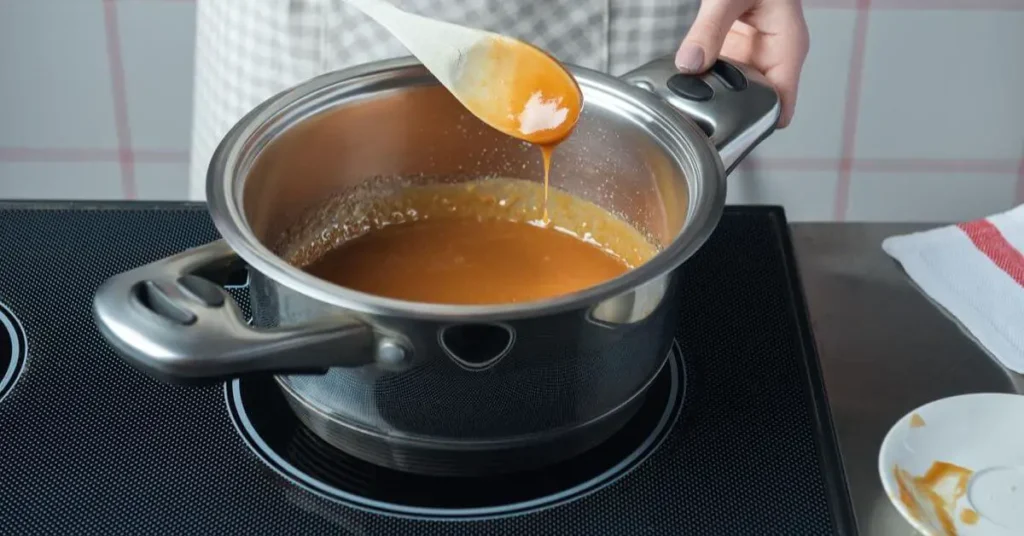Get most out of making caramel on induction

Welcome making caramel on induction to the delicious world of caramel! Whether you’re a seasoned chef or just starting your culinary adventures, making caramel on induction is a game-changer. Induction cooking offers precise temperature control and even heat distribution, ensuring that your caramel comes out perfectly every time. In this blog post, we’ll explore the benefits of making caramel on induction, share some tips for achieving that luscious golden goodness, highlight common mistakes to avoid, and even tantalize your taste buds with mouthwatering recipes. So grab your apron and let’s dive into the sweet art of making caramel on induction!
What is Induction Cooking?
Induction cooking is a modern and efficient method of preparing food that uses electromagnetic fields to heat the cookware directly. Unlike traditional gas or electric stovetops, which rely on radiant heat, induction works by creating a magnetic field that induces an electric current in the cookware. This electrical energy then generates heat, heating up the pan and its contents.
One of the main advantages of induction cooking is its speed. Induction heats up pans much faster than other methods, allowing you to start cooking almost instantly. It also provides precise temperature control, so you can easily adjust the heat level with accuracy. This precision is ideal for delicate tasks like making caramel because it prevents overheating and scorching.
Another benefit of induction cooking is its safety features. Since only the cookware becomes hot during induction cooking, there’s less risk of accidental burns or fires caused by direct contact with hot burners. Additionally, when you remove the pan from the surface, the heat stops immediately since no residual heat lingers on an active burner.
Induction cooktops are also incredibly easy to clean compared to their counterparts. Because they don’t generate as much excess heat as gas or electric stoves, spills and splatters are less likely to bake onto surfaces. Plus, most induction cooktops have smooth glass surfaces that wipe clean effortlessly.
Overall,functional,buzzworthy
Benefits of Making Caramel on Induction
Induction cooking has become increasingly popular in recent years, and for good reason. It offers a range of benefits that make it the perfect choice for making caramel.
One major advantage of using induction for caramel-making is its precise temperature control. Induction cooktops heat up quickly and allow you to set specific temperatures with precision. This is crucial when making caramel, as even a slight variation in temperature can result in burnt or grainy caramel.
Another benefit of induction cooking is its efficiency. Unlike traditional gas or electric stoves, which waste energy by heating the surrounding air, induction cooktops only heat the pot or pan directly. This means less wasted heat and faster cooking times.
Induction cooktops also offer safety advantages when it comes to making caramel. Since they rely on magnetic fields to generate heat, there’s no open flame or exposed heating element to worry about. This reduces the risk of accidental burns or fires.
Furthermore, cleaning up after making caramel on an induction cooktop is a breeze! The smooth surface makes spills easy to wipe away, saving you time and effort.
Using an induction cooktop for making caramel provides precise temperature control, energy efficiency
Tips for Making Perfect Caramel on Induction
Tips for Making Perfect Caramel on Induction:
1. Choose the right cookware: When making caramel on induction, it’s important to use a heavy-bottomed saucepan or skillet. This ensures even heat distribution and prevents the caramel from burning.
2. Use low to medium heat: Induction cooktops provide precise temperature control, so start with low to medium heat when making caramel. This allows for slow and steady heating, which is crucial for achieving that rich golden color and smooth texture.
3. Stir constantly: Caramel can go from perfect to burnt in a matter of seconds, so be sure to stir continuously while cooking. This helps prevent hot spots and ensures that the sugar melts evenly.
4. Be patient: Making caramel takes time, so resist the temptation to crank up the heat. Allow the sugar to gradually melt and caramelize, as this will result in a more flavorful end product.
5. Add cream or butter slowly: If your recipe calls for adding cream or butter to the caramel, do it gradually while stirring constantly. Adding these ingredients too quickly can cause the mixture to seize or separate.
6.
Cool before using: Once you’ve achieved your desired color and consistency, remove the caramel from the heat source immediately and transfer it into a cool container.
This stops further cooking process.
Remember, practice makes perfect when it comes to making caramel on induction! Don’t be discouraged if your first attempts don’t turn out exactly how you envisioned them – keep trying different techniques until you find what works best for you.








